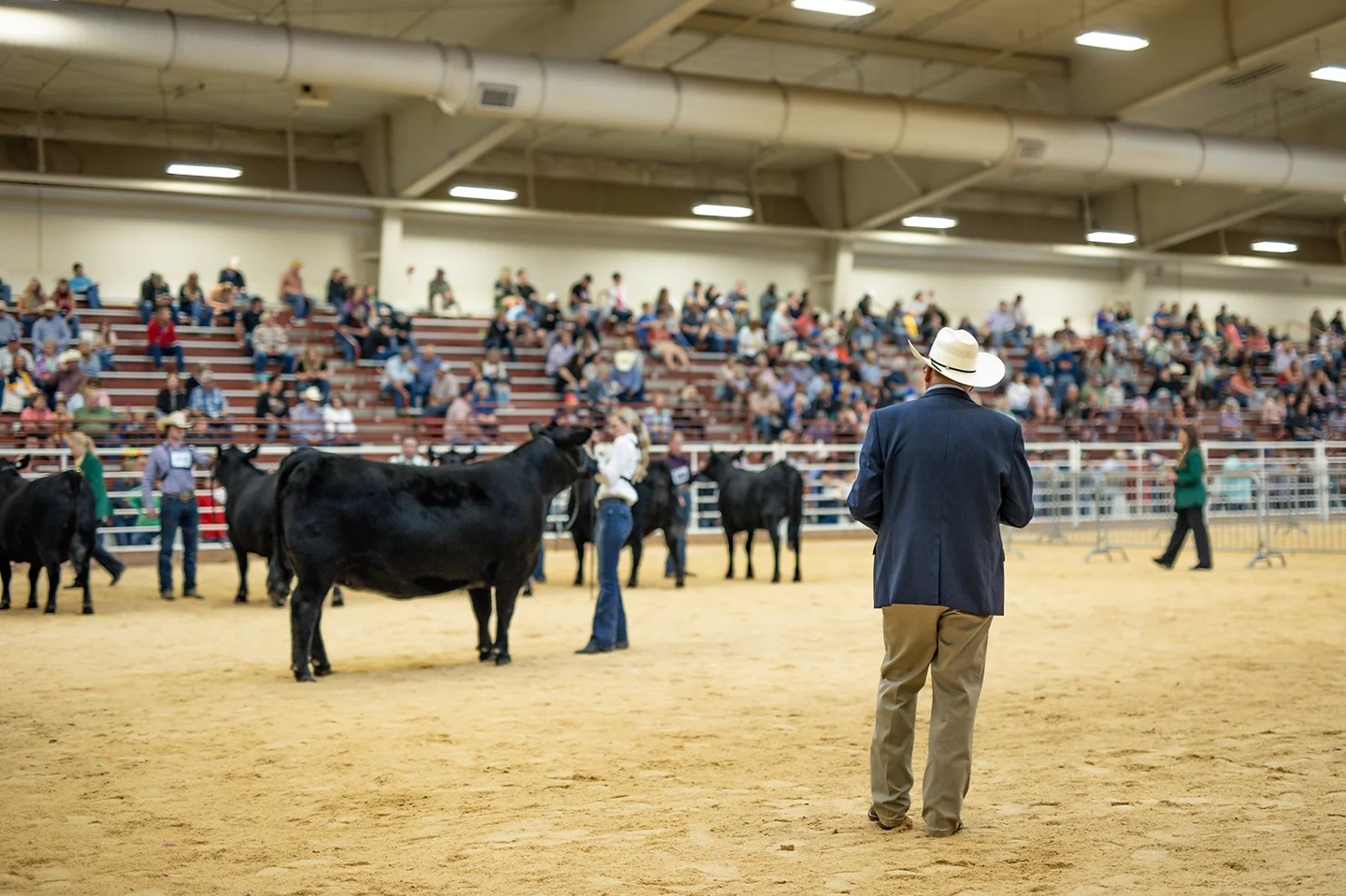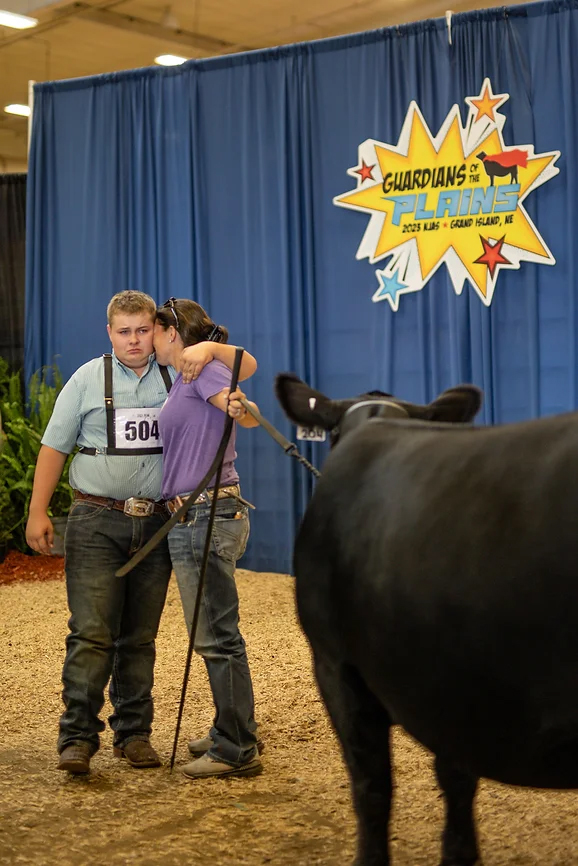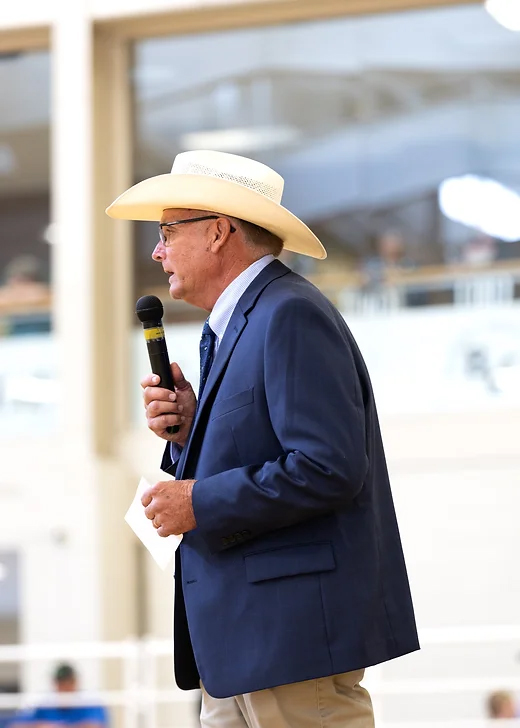Phenotype-Genotype Show Grows Interest in National Junior Angus Show
Angus junior members show in national Phenotype-Genotype Show in Grand Island, Neb.
August 1, 2023

Can something really be the best of both worlds? When it comes to evaluating phenotypes and genotypes of cattle, there is a show that looks for the answer.
The Phenotype-Genotype Show (PGS) asks judges to evaluate cattle based on looks and expected performance through expected progeny differences (EPDs). In its fourth year at the National Junior Angus Show (NJAS), the PGS slowly, but surely grows.
“Part of the Phenotype-Genotype Show is providing juniors an educational opportunity to learn about EPDs and $Values as part of the process in selecting seedstock,” said Caitlyn Brandt, American Angus Association director of events and junior activities. “The PGS brings the selection of an animal for the show ring full circle.”
The first PGS held at the NJAS was in 2020 during the COVID-19 pandemic, and 76 exhibitors entered. By 2023 for the NJAS in Grand Island, Neb., numbers rose to 100 exhibitors.
Oklahoma junior Gage Long has participated in all four of the NJAS's that have had a PGS and the Eastern Regional Junior Angus Show’s PGS several times. This year he exhibited the grand champion female in the national PGS.
“The grandma to this heifer that won here, she was a division winner at the Eastern Regional,” he said, explaining the lineage. “Then this heifer’s mom was the first PGS winner at nationals.”
The banners and recognition are nice, but Long said he enjoys the show’s added emphasis on production and the teamwork he experiences with his family.
"I like being able to breed them, see the numbers and how it all shakes out,” he said. “It’s a team effort on everything. It takes all of us at home to get them ready, to breed them, halter break them and get them clipped up and everything for the show.”
He sees himself in the seedstock business long-term and said he finds the aims of the PGS are well-aligned with his herd goals. Both of Long’s heifers at the 2023 NJAS were also shown as bred and owned.
“We’ve always been doing this, aiming for the numbers and trying to get production out of them,” Long said.
Other juniors identify with this as well and are attracted to participating. North Carolina junior Maddie Carpenter is one such member.
She says the PGS is a better match for her and her family’s herd strategy than typical shows.
“We want to make sure that they have the structure, the look in the show ring, and that they can also produce,” Maddie said.
She first became involved with the PGS program when North Carolina hosted the Eastern Regional show in 2021. She then went to NJAS to watch a PGS show and compete in some of the contests without cattle. In 2022, Carpenter was all in, showing at the Eastern Regional PGS and the NJAS’s PGS in Kansas City.
“Before the PGS, we would normally just pick the prettiest one, even if it didn’t have good (EPD) numbers,” she said. “Now that we’re more involved with the PGS, we do take and print out all of the heifers’ numbers and we will mix looks with the best numbers. The look does play a lot into it, but the judges want to see the numbers as well.”
Both of Carpenter’s heifers benefitted from the inclusion of genotype placings during the show.
“One of my heifers placed third in genotype and third in its class, and she was sixth or seventh in phenotype,” she said. “That was super rewarding. Not only did you put time into her to make her look pretty, but she also had something behind her to tell the judge she’s good, and she’s going to go home and make a good cow.”
Carpenter takes an active role in helping with herd management, learning all that she can. Although, she cannot show her females as bred and owned because the cattle are registered in her grandpa Bruce Shankle’s name, she said she likes the change to highlight bred and owned winners at this year’s show. When she saw the announcement about the addition to select bred-and-owned champions during the PGS, she immediately called her grandpa to share.

“It’s a good way to showcase the work that you’ve put in,” she said. “Most of the PGS winners this year were actually bred and owned heifers, and I think that’s awesome because they’re getting to show and make sure everyone knows it’s from your cow.”
With the show being a newer addition to the Angus junior programs, American Angus Association® board member Mark Ahearn, who serves as the junior advisor to the NJAA board and chairman of the activities committee, finds himself answering an increasing number of questions about the PGS.
“We’re getting more and more interest, and what I think is positive is we’re getting more questions,” he said. “This show week I’ve had people stopping me in the barns and asking about it.”
He said facility and staff challenges come with the addition of a second ring, used to hold the PGS, but he remains optimistic.
“I think we’re prepared to expand this in the future if interest continues,” Ahearn said. “I envision in the next few years, we’re going to capture a whole other group of juniors that are going to be excited to show in this.”

Topics: Award winner , EPDs , Genetics , Events , News , Success Stories , Reproduction , Selection , Record Keeping
Publication: Angus Journal


